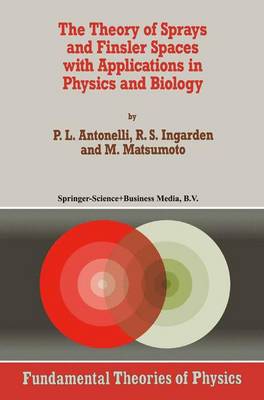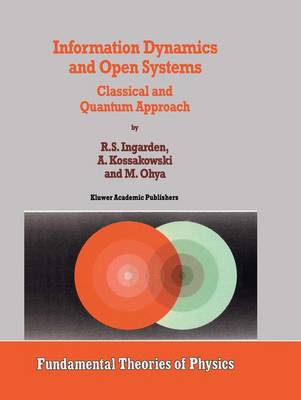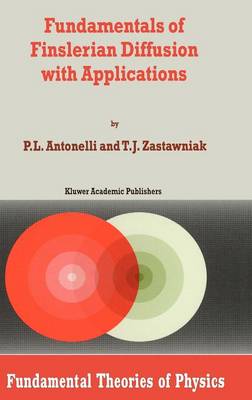Fundamental Theories of Physics
3 primary works
Book 58
The Theory of Sprays and Finsler Spaces with Applications in Physics and Biology
by P L Antonelli, Roman S. Ingarden, and M. Matsumoto
Published 31 October 1993
The present book has been written by two mathematicians and one physicist: a pure mathematician specializing in Finsler geometry (Makoto Matsumoto), one working in mathematical biology (Peter Antonelli), and a mathematical physicist specializing in information thermodynamics (Roman Ingarden). The main purpose of this book is to present the principles and methods of sprays (path spaces) and Finsler spaces together with examples of applications to physical and life sciences. It is our aim to write an introductory book on Finsler geometry and its applications at a fairly advanced level. It is intended especially for graduate students in pure mathemat ics, science and applied mathematics, but should be also of interest to those pure "Finslerists" who would like to see their subject applied. After more than 70 years of relatively slow development Finsler geometry is now a modern subject with a large body of theorems and techniques and has math ematical content comparable to any field of modern differential geometry. The time has come to say this in full voice, against those who have thought Finsler geometry, because of its computational complexity, is only of marginal interest and with prac tically no interesting applications. Contrary to these outdated fossilized opinions, we believe "the world is Finslerian" in a true sense and we will try to show this in our application in thermodynamics, optics, ecology, evolution and developmental biology. On the other hand, while the complexity of the subject has not disappeared, the modern bundle theoretic approach has increased greatly its understandability.
Book 86
Information Dynamics and Open Systems
by Roman S. Ingarden, A. Kossakowski, and M. Ohya
Published 31 March 1997
This book has a long history of more than 20 years. The first attempt to write a monograph on information-theoretic approach to thermodynamics was done by one of the authors (RSI) in 1974 when he published, in the preprint form, two volumes of the book "Information Theory and Thermodynamics" concerning classical and quantum information theory, [153] (220 pp.), [154] (185 pp.). In spite of the encouraging remarks by some of the readers, the physical part of this book was never written except for the first chapter. Now this material is written completely anew and in much greater extent. A few years earlier, in 1970, second author of the present book, (AK), a doctoral student and collaborator of RSI in Toruli, published in Polish, also as a preprint, his habilitation dissertation "Information-theoretical decision scheme in quantum statistical mechanics" [196] (96 pp.). This small monograph presented his original results in the physical part of the theory developed in the Torun school. Unfortunately, this preprint was never published in English. The present book contains all these results in a much more modern and developed form.
Book 101
Fundamentals of Finslerian Diffusion with Applications
by P L Antonelli and Tomasz Zastawniak
Published 31 December 1998
The erratic motion of pollen grains and other tiny particles suspended in liquid is known as Brownian motion, after its discoverer, Robert Brown, a botanist who worked in 1828, in London. He turned over the problem of why this motion occurred to physicists who were investigating kinetic theory and thermodynamics; at a time when the existence of molecules had yet to be established. In 1900, Henri Poincare lectured on this topic to the 1900 International Congress of Physicists, in Paris [Wic95]. At this time, Louis Bachelier, a thesis student of Poincare, made a monumental breakthrough with his Theory of Stock Market Fluctuations, which is still studied today, [Co064]. Norbert Wiener (1923), who was first to formulate a rigorous concept of the Brownian path, is most often cited by mathematicians as the father of the subject, while physicists will cite A. Einstein (1905) and M. Smoluchowski. Both considered Markov diffusions and realized that Brownian behaviour nd could be formulated in terms of parabolic 2 order linear p. d. e. 'so Further more, from this perspective, the covariance of changes in position could be allowed to depend on the position itself, according to the invariant form of the diffusion introduced by Kolmogorov in 1937, [KoI37]. Thus, any time homogeneous Markov diffusion could be written in terms of the Laplacian, intrinsically given by the symbol (covariance) of the p. d. e. , plus a drift vec tor. The theory was further advanced in 1949, when K.


